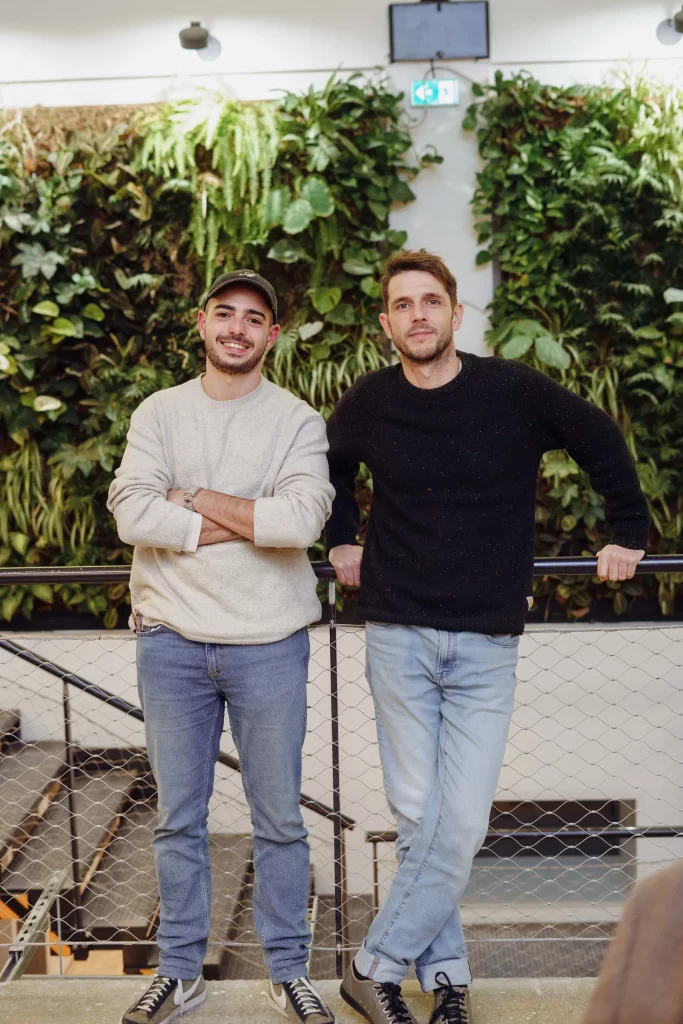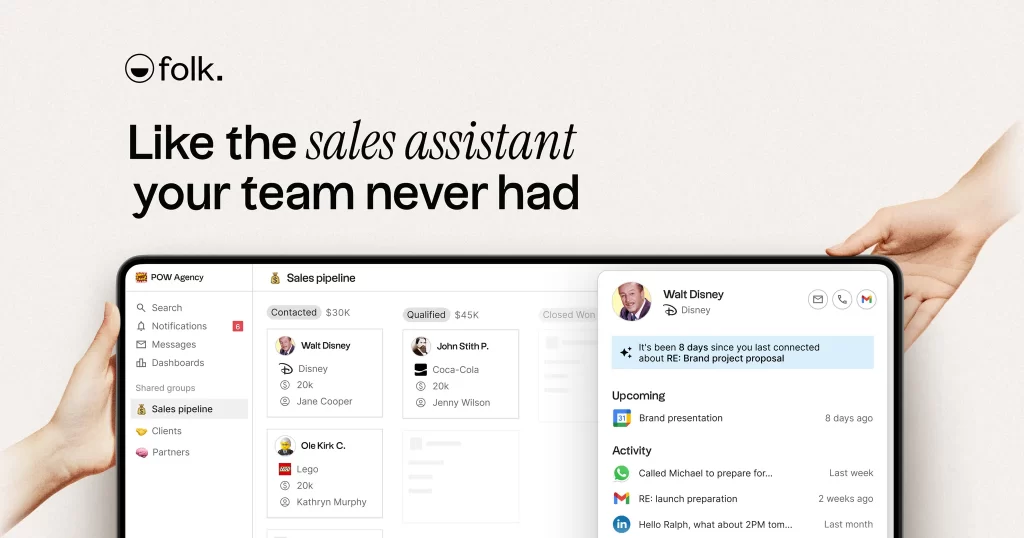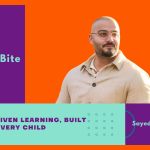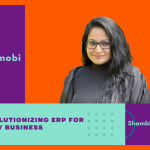CRM software has been around for decades, but for many businesses, it remains a frustrating, overly complex tool. Folk is changing that by focusing on simplicity, automation, and a seamless user experience. Instead of forcing companies to adapt to rigid systems, Folk adapts to them—helping teams manage relationships effortlessly. Founder Simo Lemhandez shares how Folk is rethinking CRM by stripping away the bloat, integrating AI, and putting user experience first.

Simo Lemhandez (CEO) and Jean-Yves Poilleux (CTO).
1. What inspired the creation of Folk CRM, and how has its vision evolved since its inception?
Simo Lemhandez: CRM is one of the oldest, largest, and most profitable sectors in SaaS. However, it also has some of the lowest NPS scores. That, combined with the fact that modern, no-code tools have changed our expectations for user experience, meant the CRM space was ready for change.
In 2020, we started Folk to challenge what we saw as the status quo: overly complex, clunky, and transactional CRMs. We wanted to build something that leveraged technology to connect people in business.
We got started with $9M in 2021 from Accel and 100 angels who believed in the idea. In the last few years, we’ve found that almost 4,000+ teams shared that vision, too.
2. What key gaps in the traditional CRM landscape did Folk set out to address?
Simo Lemhandez: One of my favourite customer quotes is, “[folk] is a CRM that doesn’t destroy your soul.” Sure, it’s hilarious, but it also tells you everything you need to know about how people feel about their CRM.
We’re rewriting the script. Folk started by addressing design. We started by stripping everything back to what you actually need to manage different types of contacts. And not a button anymore. We wanted it to be beautiful and delightful to use. We made it easy to get set up with simple templates. And if you need help, our team is here. A lot of our customers know Julie, our CSM, by name. The idea is that you sign up to Folk and can start managing deals that day.
Now, we’re working on building a proactive CRM. We have folkX, a LinkedIn extension that imports and enriches contacts in one click, and have introduced AI features to help you manage follow-ups and send outreach faster.
3. Folk CRM integrates AI-powered features like Magic Fields and innovative enrichment tools. How do these capabilities enhance user productivity?
Simo Lemhandez: In 2025, AI will be a no-brainer. But in my opinion, most CRMs are using this technology to make interactions increasingly transactional. We want to help our service businesses do the boring, busy work so they can focus on the people part of the business.
Basically, Folk combines all your contact data with AI, so users don’t have to switch between multiple tools. From finding contact information to crafting personalized outreach messages and tracking deals across a pipeline, it’s all in one place now.

4. Your platform is praised for its simplicity and flexibility. How does Folk ensure ease of use while delivering robust functionalities?
Simo Lemhandez: Creating simplicity in a product is actually more complex. You can see it in how clunky the old school options have become. We’ve done a lot of research to understand what our customers need and have continued to stay close to them as we evolve.
We’ve been inspired by tools people already use, like Notion and the trusty spreadsheet. We don’t reinvent the wheel; we apply what people love to CRMs.
5. Folk offers advanced integrations, from LinkedIn and Gmail to Clearbit and Zapier. How do these integrations improve collaboration and workflow management?
Simo Lemhandez: When you centralize your data and make it available to your team, you unlock collaboration and efficiency. It’s how we work at Folk, too.
Take this scenario from one of our clients, OWOW, as an example:
• Sales prospects faster with our folkX extension by bulk importing leads in 1-click.
• After a discovery call, your founders can import video recordings and history of interactions so all the context is in one place.
• And then, the account executives can send personalized pitches to keep the deal moving.
It’s really unlocking our customers’ ability to grow their service businesses, as we do a lot of the busy work for them.
6. Folk enables personalized outreach with AI-driven email sequences and follow-ups. Could you share examples of how users have leveraged this feature to drive results?
Simo Lemhandez: Our sweet spot is with service businesses. Relationships are important in any industry, but it’s 10x in an agency setting. Their survival really depends on nurturing connections with people through high-touch sales — and, eventually, repeat work.
Our LinkedIn extension, folkX, helps them establish these connections without all the manual data entry. Once they’ve interacted with a prospect or client, we usually see customers using Messages and Sequences to foster deeper relationships with industry updates or event invites.
We’ve actually just launched AI Follow-ups, which is like an AI sales assistant. We help identify the best leads and draft outreach messages so customers are using their time on the best deals.
7. The CRM market is highly competitive. How does Folk differentiate itself and maintain its relevance?
Simo Lemhandez: True. But the fact is, it’s also the biggest sector in SaaS, so there’s plenty of opportunity for innovation.
First, we’re clear on what we aren’t. We’re not chasing huge teams who are sending thousands of outbound campaigns and slicing and dicing the analytics for incremental change. We are focused on helping new and established service businesses build genuine relationships with their partners, prospects, and customers.
We plan to stay simple and easy to use. We’re focused on using new technology to help with the busy work so our creative customers can get back to building, designing, and consulting — the work that inspired them to start their companies in the first place.
8. Folk’s pricing plans cater to diverse needs, from startups to enterprise teams. How do you ensure value for each customer segment?
Simo Lemhandez: By getting specific about who we serve, we’re able to build for customers who have similar philosophies about how they manage their sales and relationships.
What can vary is the size of the team, so we price per seat. This has helped us simplify pricing. That being said, we also have flexibility if a team is looking for something special, like additional messaging, because they manage events or additional enrichment credits to help fill in an existing database of contacts. In those cases, our team can provide custom proposals.
9. What do you enjoy most and least about your journey in developing Folk CRM?
Simo Lemhandez: One of the things I love most about building Folk is getting to interact with so many businesses. I get to see under the hood and help them with revenue generation. It’s really the core. Folk helps them find clients and ultimately sustain their existence; it’s rewarding.
I also enjoy seeing different business contexts. It must connect to my background in consulting.
I enjoy the admin stuff the least. Obviously, it’s a necessity for the job, but I prefer taking on significant challenges.
10. What was the biggest challenge your team faced, and how did you overcome it?
Simo Lemhandez: The CRM space has existed for over twenty years. Even though the legacy players are clunky, they’ve built a ton of features, and these companies are making $100M+ in revenue. They deserve our respect.
Going up against them is not a joke; we had a lot of catching up to do feature-wise.
We spent the early days modernizing the look and feel of a CRM, and then last year, we made sure Folk covered “the checklist” so we could win deals from companies migrating from old solutions. Sometimes, evolving existing ideas can get tedious.
Now I’m even more stoked! We’re starting to launch new and unexpected features. We’re actually at a stage where we’re really challenging the expectations of a CRM. We’re moving from an evolution to a revolution. We’re focused on leveraging AI and predictive tech to create a CRM that’s more like a sales assistant.
11. What does success mean to you, and what are your aspirations for Folk in the coming years?
Simo Lemhandez: Success looks different for everyone. For me, I want to build a product we put in the hands of millions—the kind of product that doesn’t just have users but fans. That’s the professional goal.
But from a personal angle, having a strong financial upside is a motivator, too. I want to be able to control my destiny, and I like that for my team, too.
12. What does a typical day look like for your team at Folk?
Simo Lemhandez: I juggle a lot. I usually switch between Product, GTM, and Design throughout the day. At the moment, I’m investing heavily in hiring, which is time-consuming. But crucial. Another crucial thing is making time to listen in on sales calls. It’s how I’ve really gotten to understand our customers.
Editor’s Note
Talking to Simo Lemhandez, it’s clear that Folk isn’t just another CRM—it’s a deliberate reimagining of what a CRM should be. By cutting through unnecessary complexity, Folk gives businesses a tool that’s intuitive, flexible, and genuinely useful. Lemhandez isn’t interested in adding more buttons; he’s focused on making relationship management feel natural. In a market filled with bulky, transactional CRMs, Folk stands out by making connections the priority.


